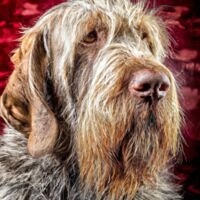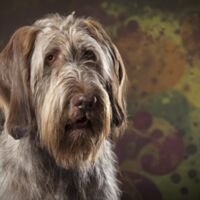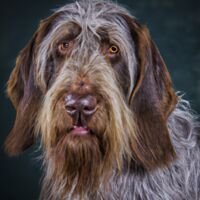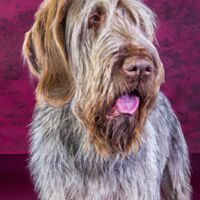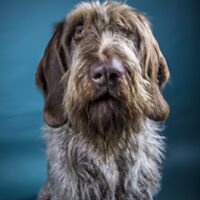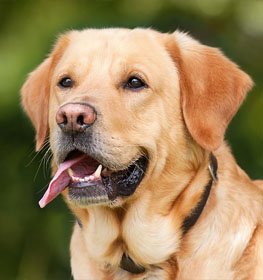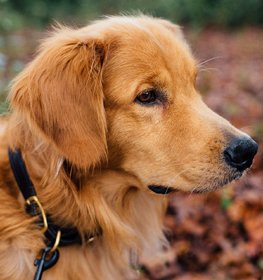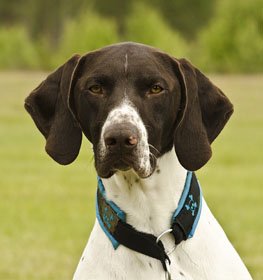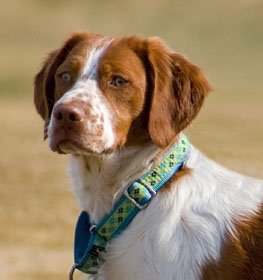Spinone Italiano Information & Dog Breed Facts
Collection of all the general dog breed info about Spinone Italiano so you can get to know the breed more.
| Group | Gun Dog |
|---|---|
| Popularity Rank | 111 |
| Reviews | 0 |
| User Ratings | |
|
Compare the Spinone Italiano With Other Dogs
Select at least one dog breed to make the comparsion. | |
 | |
| Origin | |
|
Common Names & Aliases
What other names is a Spinone Italiano known by? Discover all traditional, regional and informal names used for this breed. | Italian Coarsehaired PointerItalian GriffonItalian Wire-Haired PointerSpinoneItalian Spinone |
|---|---|
|
Breed Classification
What type of dog breed is a Spinone Italiano? Learn about its genetic classification and breeding category. | Purebred |
Photo Gallery of the Spinone Italiano Breed
|
Size Classification
What size category is a Spinone Italiano? Learn how big the Spinone Italiano breed typically grows. | LargeMedium |
|---|---|
|
Weight Statistics
How much does a Spinone Italiano weigh? Discover typical weight ranges for adult males and females of the Spinone Italiano breed. | Male: 60-80 pounds (27-36 kg), Female: 50-70 pounds (22-31 kg) |
|
Average Weight
What is the average weight of a Spinone Italiano? | Male: 70 pounds (31.5 kg), Female: 60 pounds (26.5 kg) |
|
Height
How tall is the Spinone Italiano? Spinone Italiano height: | 23 - 28 inches (58 - 70 cm) |
|
Average Height
What is the average height of a Spinone Italiano? | 23 - 28 inches (58 - 70 cm) |
|
Price Range
How much does a Spinone Italiano puppy cost? Find current market prices and factors affecting Spinone Italiano costs. | $1500-$2000 If you choose to purchase the Spinone Italiano, you should know that the mentioned amount of money is an average of the collected data from breeders’ sites and puppy finder places. If you have a Spinone Italiano for sale, please advertise it on a reliable website to make sure the Spinone Italiano gets to a happy place. |
|---|---|
|
Availability
How easy is it to get a Spinone Italiano? How many Spinone Italiano are there in the world? | Frequent: The Spinone Italiano is easier than average to get. Maybe there is some risk of overbreeding, as it is a popular breed. Due to its popularity, inbreeding may occur. A new study shows that inbreeding contributes to the incidence of disease and health problems. So be careful and seek the help of an experienced person or a professional, in making your decision. |
|
Intelligence Rating
How intelligent is a Spinone Italiano? Discover the Spinone Italiano's intelligence ranking and learning capabilities. | Low to average: This canine intelligence is not the brightest one. Keep in mind that if you want to teach them any tricks, they understand and memorize new commands in 40-80 repetitions. Spinone Italiano obey the first command 30% of the time or better. So if you want to have a smart dog, you might have to reconsider your choice with this breed.
The Spinone Italiano ranks below average in the intelligence ranking of dogs. |
|---|---|
|
Training Difficulty
How easy is it to train a Spinone Italiano? Learn about the Spinone Italiano's trainability and response to training methods. | Spinone Italiano dogs are quite easy to train. Sometimes they can be challenging, but if you're consistent in teaching new commands they will obey for sure. |
|
Watchdog Rating
How good is a Spinone Italiano as a watchdog? Learn about the Spinone Italiano's alertness and guarding instincts. | Spinone Italiano dogs are average watchdogs. If they sense something different, they will alert you, but observation isn't considered their main job.
|
|
Territorial Protection
Is a Spinone Italiano protective of its territory? Learn about the Spinone Italiano's guarding instincts and behavior. | Spinone Italiano dogs are average defenders. Some dogs are very protective of their territory, while others easily let a stranger to trespass. This breed is not sure to defend its territory in every situation. |
|
Personality Traits
What personality does a Spinone Italiano have? Learn about characteristic Spinone Italiano temperament and behavior traits. | FriendlyDocileAffectionatePatientLoyalGentle |
|---|---|
|
Sensitivity Level
How sensitive are they? Spinone Italiano sensitivity: | Sensitive: Spinone Italiano dogs don't like an irregular daily routine, noisy household, and frequent guest visits.
This breed's emotional level reflects their owner's feelings and they don't handle punishments well. |
|
Affection Level
How affectionate are they? Is a Spinone Italiano a good family dog? | Average to High: Spinone Italiano dogs are highly affectionate dogs. They like being involved in the family's life. This breed isn't considered an aloof dog. |
|
Social Needs
How much social interaction does the Italian Coarsehaired Pointer need? Spinone Italiano social needs: | Spinone Italiano dogs are a social breed. They enjoy being around people or other animals. This breed doesn't tolerate being left alone. |
|
Impulse to Wander or Roam
How likely is the Spinone Italiano to run away? Does this breed explore or wander a lot? Does Spinone Italiano roam? | Spinone Italiano dogs have high wanderlust potential, which means that this breed has a strong desire for exploring the world. Safer to walk them on a leash unless you teach them how to get back to you on command. This breed is also able to cause damage to your fence. |
|
Prey Drive
Do this canine have a strong prey drive? Does Spinone Italiano have high prey drive? | Spinone Italiano dogs have an average prey drive, which means that they don't have a high impulse to chase and catch something like a cat or any other small aminals, but it might happen. Training can help to achieve good behavior. |
|
Barking Frequency
Does a Spinone Italiano bark a lot? Learn about typical Spinone Italiano vocalization patterns and triggers. | Low to Average: The Spinone Italiano rarely barks. This breed could be a good choice if you're looking for a quiet breed. They don't bark unless there is a good reason.
Top reasons for barking: protection, alarm, fear, boredom, attention-seeking, greeting, separation anxiety, compulsive barking. |
|---|---|
|
Playful Nature
How playful is a Spinone Italiano? Understand the typical play drive and energy level of the Spinone Italiano breed. | Average: Spinone Italianos, like any other dog breed, like playing. Sometimes they bark in excitement for playing, but they are not the most playful dog breed. |
|
Apartment Adaptability
Can a Spinone Italiano live in an apartment? Learn about the Spinone Italiano's suitability for apartment living. | It is not the best choice if you want to keep them indoors, however, with careful exercise and several walks a day, they will tolerate the indoor environment, so it is possible to keep Spinone Italiano indoors. |
|
Lifestyle Adaptability
How adaptable is a Spinone Italiano to lifestyle changes? Learn about the Spinone Italiano's flexibility to new situations. | Average: Spinone Italiano dogs adapt to lifestyle changes and different living environments quite okay usually. |
|---|---|
|
Alone Time Tolerance
Can a Spinone Italiano be left alone? Learn about the Spinone Italiano's tolerance to solitude. | Spinone Italiano dogs do best when a family member is at home during the day or if their workplace is dog-friendly so they can take the dog at work. |
|
Bite Risk Assessment
What is a Spinone Italiano biting potential? Learn about the Spinone Italiano's bite risk factors. | Low 🔽 The Spinone Italiano has a low chance of biting somebody. Top reasons for dog bite: protection, pain, excitement, herding instinct, being provoked. (Data based on the available online bite statistics.) |
|---|---|
|
Mouthing Tendency
Is a Spinone Italiano mouthy? Learn about the Spinone Italiano's tendency to use mouth during play. | Spinone Italiano dogs have an average tendency to nip, chew, playbite, or herd people. It's a common habit during puppyhood, not aggressive behavior. These "bites" don't hurt, but Spinone Italiano dogs need to be taught a good attitude. |
|
Bite Strength Rating
How strong is a Spinone Italiano bite? Learn about the Spinone Italiano's bite force measured in PSI. | Between 200 and 400 PSI ⏺ Spinone Italiano bite force: Ordinary. Bite force Spinone Italiano measurements typically fall within the range of 200 to 400 PSI. The bite force of a Spinone Italiano is considered ordinary when compared to other dog breeds, but it is still quite powerful. This Spinone Italiano bite force PSI can cause bite wounds. Spinone Italiano bite PSI is not something that should be feared if the dog is well-trained and managed. To avoid any issues, it's essential to learn how to train a Spinone Italiano puppy not to bite from an early age.
The Spinone Italiano, and many others, have a fearsome presence because they have significant jaw strength, so it is important not to anger the dog and have it around strangers until it is fully trained. However, they are usually quite calm and good companions, they work well in families and are easy to care for. In conclusion, while the Spinone Italiano bite force is certainly an interesting aspect of the breed, it is important not to let it overshadow the many other reasons why these dogs are so loved and respected. With proper training and socialization, a Spinone Italiano can be a loyal and protective companion for your family. |
|
Average Lifespan
How long does a Spinone Italiano live? Learn about the typical lifespan of the Spinone Italiano breed. | 12-14 years The average lifespan of Spinone Italiano: 13 years |
|---|---|
|
Climate Tolerance
How well does a Spinone Italiano handle different weather? Learn about the Spinone Italiano's climate adaptability. | Tolerates warm and cold weather Dogs that tolerate hot and cold weather are typically those that have a double coat of fur. Dogs with a double coat of fur have a layer of fur that insulates their skin and helps protect them from the cold and the heat. |
|
Health Concerns
What health issues are common in a Spinone Italiano? Discover typical conditions affecting the Spinone Italiano breed. | The Spinone Italiano is a healthy breed, but there are certain health issues that you should check with your vet regularly. |
|
Vet Care Frequency
How often does a Spinone Italiano need vet visits? Learn about the Spinone Italiano's veterinary care requirements. | Average The Spinone Italiano should have a complete physical check-up at least once per year. If your dog shows any symptoms, call your veterinarian. |
|
Health Problems
What genetic/health problems does the Spinone Italiano breed have? What are the health issues and concerns of the Spinone Italiano breed? Most common health risks of Spinone Italiano: | BloatCerebellar Ataxia |
|
Energy Rating
How energetic is a Spinone Italiano? Understand daily activity needs of the Spinone Italiano breed. | Spinone Italiano dogs have a higher energy level than other dog breeds. If you want a dog for snuggling on the couch, this breed isn't the perfect choice for you. |
|---|---|
|
Activity Requirement / Exercise Need
How much exercise does a Spinone Italiano need? How much exercise do Spinone Italiano dogs require per day?
Do Spinone Italiano dogs need a lot of exercises? | Spinone Italiano dogs need quite a lot of exercise. Daily walks should be on schedule. If you live an active life, this breed can be a good choice for you. |
|
Sleeping Need
How much sleep does the Spinone Italiano breed need? | Spinone Italiano dogs are quite energetic dogs and they don't spend too much time with sleeping. If you live an active life, this breed can be a good choice for you. |
|
Obesity Tendency
Is a Spinone Italiano prone to weight gain? Learn about the Spinone Italiano's obesity risks. | Average: The Spinone Italiano has an average risk for obesity. Daily walks should be on schedule. To make your dog happy and fit, feed him with quality dry dog food and live an active life together. Try to find the happy medium between exercise and feeding.
If you notice any weight gain, consult your veterinarian and make a diet plan. Reduce unhealthy food and snacks, and measure the Spinone Italiano weight regularly. |
|---|---|
|
Food Consumption
How much food does a Spinone Italiano need daily? Learn about the Spinone Italiano's feeding requirements. | 2.5 to 3.5 cups of a high-quality dog food daily, divided into two meals. |
|
Allergy Friendliness
Is a Spinone Italiano hypoallergenic? Learn about the Spinone Italiano's suitability for allergy sufferers. | No Spinone Italiano dogs don't do well with allergy sufferers by causing allergic reactions. Some dog breeds are even considered to higher possibility of an allergic response. Coat type isn't necessarily relevant, because most people are allergic to dander (flakes on the dog's skin) or saliva, not actually to dog hair. |
|---|---|
|
Coat Colors
What colors does a Spinone Italiano come in? Discover all possible Spinone Italiano color variations. | White BrownOrangeRoan |
|
Grooming Requirements
How much grooming does a Spinone Italiano need? Learn about Spinone Italiano coat maintenance requirements. | Average: The Spinone Italiano requires average grooming effort. Cutting the dog's hair by a professional groomer isn't essential. Brushing the dog's coat is useful to reduce shedding. Ears and eyes should be cleaned regularly to avoid infections. Don't skip the seasonal flea treatment too. Dog nail trimming and dog bath can be helpful sometimes. Check the local pet store for dog grooming supplies and find the best dog shampoo to keep its coat healthy and give your dog a pleasant experience of a dog bath. If you don't have the time, skill, or money to take care of your Spinone Italiano, search for a dog groomer or clipping service in your area and book an appointment. Maybe you're lucky to have a dog boarding service that includes grooming or walk-in dog bath places nearby. |
|
Drooling Tendency
Does a Spinone Italiano drool a lot? Learn about the Spinone Italiano's drooling habits. | The Spinone Italiano is a big drooler, so if you're disgusted by slobber spots on your clothes, you should choose a dog from another breed. Drooling is the unintentional saliva flowing outside of the mouth. It can be completely normal or a sign of a health problem. Certain dog breeds drool much more than others, just like the Spinone Italiano.
If you notice any change in your dog's drooling habit, you should contact a vet as soon as possible. |
|
Stinkiness Rating
Does a Spinone Italiano smell bad? Learn about the Spinone Italiano's natural odor levels. | Medium ⏺ The Spinone Italiano has an average chance of bad smell. Top reasons for dog stinkiness: infection of bad tooth/ear/skin folds, gas attacks. |
|
Coat Characteristics
What type of coat does a Spinone Italiano have? Learn about the Spinone Italiano's fur characteristics. | Wiry |
|
Bathing Needs
How often does a Spinone Italiano need baths? Learn about the Spinone Italiano's bathing requirements. | 8-12 weeks Very rarely. Bathing your dog is beneficial to them in more ways than just one. It’s also a good time to look for unusual scratches, bumps, fleas, and other irregularities. When their hair is wet and flat against their body, these details are more visible.
For example, short-haired dog breeds can go a very long time in between baths. These short-haired breeds shed regularly and that shedding works to naturally remove excess dirt and oil. So unless your weenie dog got into the garbage can, you can probably hold off on a bath for a while. |
|
Shedding Level
How much do Spinone Italiano dogs shed? How to control, reduce and prevent the shedding of the Italian Coarsehaired Pointer? Do Spinone Italiano dogs shed a lot? | Spinone Italiano dogs shed none to minimal. Having a puppy from this breed you don't have to be afraid of your couch or car being covered by dog hair. Spinone Italiano dogs could be the best choice if you don't tolerate dog hair. |
|
Child Compatibility
Is a Spinone Italiano good with children? Learn about the Spinone Italiano's behavior around kids of different ages. | Spinone Italiano dogs are very kid-friendly dogs. This breed enjoys being surrounded by children.
|
|---|---|
|
Pet Compatibility
How well does a Spinone Italiano get along with other pets? Discover the Spinone Italiano's compatibility with other animals. | Spinone Italiano dogs are generally with other pets. |
|
Stranger Friendly
Are they aggressive or friendly towards/with strangers? Spinone Italiano temperament with other people: | Spinone Italiano dogs are very stranger-friendly dogs. |
|
Cat Friendly
How well do Spinone Italiano dogs get along with cats? Are they good with kittens? What is this fido's temperament with cats? Can they be good with cats? Can the Spinone Italiano breed live with a cat? | Spinone Italiano dogs are average friendly towards cats. |
|
Dog Friendly
Is Spinone Italiano good with other dogs? Are they dog-friendly dogs? How well do Spinone Italiano dogs get along with other dogs? | Spinone Italiano dogs are very dog-friendly dogs. If you want more dogs in your family or you'd like to join dog meetups, the Spinone Italiano can be a great choice. |
|
Good For First Time Owners
Is Spinone Italiano breed good for first-time owners? Do they make a good dog for novice owners? Is Spinone Italiano breed suitable for first-time owners? | Yes Spinone Italiano dogs are good for novice owners, due to their easy-going personality. |
|
Office Friendly
Are Spinone Italiano dogs good office canines? Do Spinone Italiano dogs make good office-friendly pets? Can they be office dogs? | No Spinone Italiano is not the best dog breed for office environment. |
|
Senior Citizens Friendly
Are they senior citizens friendly dogs? How well do Spinone Italiano dogs get along with the elderly people? What is the Italian Coarsehaired Pointer temperament with senior people? Are Spinone Italiano dogs good for elderly owners? | Spinone Italianos are one of the best breeds for elderly people. |
|
Service Dog Capability
Can a Spinone Italiano be a service dog? Learn about the Spinone Italiano's service work potential. | Not really This breed generally not used as a service dog. A service dog is a term used in the USA to refer to any type of assistance dog specifically trained to help people who have disabilities, such as visual impairment, hearing impairments, mental disorders, seizures, mobility impairment, and diabetes. Service dogs are protected under the ADA (Americans with Disabilities Act).
Spinone Italiano is not the best breed for service purposes. |
|---|---|
|
Therapy Work Suitability
Is a Spinone Italiano good as a therapy dog? Learn about the Spinone Italiano's therapy work aptitude. | Not really This breed is generally not used as a therapy dog. A therapy dog is a dog that might be trained to provide affection, comfort, and love to people in hospitals, retirement homes, nursing homes, schools, hospices, disaster areas, and people with anxiety disorders or autism.
Spinone Italiano is not the best breed for therapeutic purposes. |
|
Scent Detection Ability
Is a Spinone Italiano good at detection work? Learn about the Spinone Italiano's scenting abilities. | Not really They are not typically employed for this type of work, but there may be exceptional cases. A detection dog or sniffer dog is a dog that is trained to use its senses (mostly its smell) to detect substances such as explosives, illegal drugs, wildlife scat, currency, blood, and contraband electronics such as illicit mobile phones.
Spinone Italiano is not the best breed for detection purposes. |
|
Search & Rescue Potential
Can a Spinone Italiano do search and rescue? Learn about the Spinone Italiano's SAR capabilities. | Not really This dog breed is not typically used as a search and rescue dog. The use of dogs in search and rescue (SAR) is a valuable component in wilderness tracking, natural disasters, mass casualty events, and locating missing people.
The Spinone Italiano is not the best breed for SAR purposes. |
|
Maritime Work Ability
Is a Spinone Italiano good on boats? Learn about the Spinone Italiano's maritime capabilities. | Not really Spinone Italiano breed usually doesn't like being on a boat. Boat dogs were typically bred for their strength, stamina, and water resistance, as they were often required to perform tasks such as pulling in fishing nets, and jumping into the water to retrieve ropes or lines, or helping to move cargo. Sailor dog is a type of dog that was bred to accompany sailors on their voyages. They were typically used for three purposes: as a working dog, a watchdog, and as a companion. A boat dog is a term used to describe a type of dog that was traditionally bred and used as a working dog on boats. |
|
Draft Work Capability
Can a Spinone Italiano pull carts? Learn about the Spinone Italiano's drafting abilities. | Not really A drafting dog or draft dog is a dog bred and used for cart pulling. Dogs bred for this work have strong builds and qualities that are needed, strength and determination.
Spinone Italiano is not the best breed for drafting purposes. |
|
Military Service Background
Was a Spinone Italiano used in military service? Learn about the Spinone Italiano's military history. | Not really In history, this breed was not really used for combat dog. |
|
Puppy Litter Size
How many puppies does a Spinone Italiano usually have? Learn about typical litter sizes. | 4-8 puppies |
|---|---|
|
Pregnancy Duration
How long is a Spinone Italiano pregnant? Learn about the Spinone Italiano's gestation period. | 60-64 days Reproductive cycle of the female Spinone Italiano: The first period called Proestrus lasts for about 9 days.
During this time the females start to attract males. You can notice by swelling vulva and bloody discharge. The second part is the Estrus when the female is receptive for the male. It lasts for about 3 to 11 days. The sign of the proestrus part is the soft and enlarged vulva. The discharge decreases and lightens in color. The third part is the Diestrus. Normally, it occurs around day 14. In this period the female’s discharge changes for vivid red and coming to its end. The vulva returns to average, and she will no longer permit mating. The fourth part called the Anestrus. The time frame between heat periods normally lasts about six months. |
|
Breeding Frequency
How often can a Spinone Italiano have puppies? Learn about safe breeding intervals. | Once a year. More frequent breeding is not healthy. It is very important not to buy a dog from a puppy mill, where the needs of the pups and their mothers are ignored. It's an inhumane high-volume dog breeding facility, where puppies born several times a year. |
|
AKC Classification
What AKC group is a Spinone Italiano in? Learn about the Spinone Italiano's AKC classification. | Recognized by the American Kennel Club in 2000 as a Sporting breed. |
|---|---|
|
FCI Classification
What FCI group is a Spinone Italiano in? Learn about the Spinone Italiano's international classification. | Recognized by FCI in the Pointing Dogs group, in the Continental Pointing Dogs section. |
|
Kennel Club Recognition
Which kennel clubs recognize a Spinone Italiano? Learn about the Spinone Italiano's official recognition. | American Canine RegistryAmerican Kennel ClubAmerica's Pet RegistryDog Registry of America Inc.Federation Cynologique InternationaleKennel Club of Great BritainNorth American Purebred Registry, Inc.American Canine Association, Inc.Continental Kennel ClubNational Kennel ClubNew Zealand Kennel ClubCanadian Canine Registry |
Spinone Italiano Pros and Cons
- Shedding Level: Spinone Italiano dogs shed none to minimal.
- Child Compatibility: Spinone Italiano dogs are very kid-friendly dogs.
- Dog Friendly: Spinone Italiano dogs are very dog-friendly dogs.
- Senior Citizens Friendly: Spinone Italianos are one of the best breeds for elderly people.
- Good For First Time Owners: Spinone Italiano dogs are good for novice owners, due to their easy-going personality.
- Intelligence Rating: Low to average: This canine intelligence is not the brightest one.
- Allergy Friendliness: Spinone Italiano dogs don't do well with allergy sufferers by causing allergic reactions.
- Drooling Tendency: The Spinone Italiano is a big drooler, so if you're disgusted by slobber spots on your clothes, you should choose a dog from another breed.
- Impulse to Wander or Roam: Spinone Italiano dogs have high wanderlust potential, which means that this breed has a strong desire for exploring the world.
- Alone Time Tolerance: Spinone Italiano dogs do best when a family member is at home during the day or if their workplace is dog-friendly so they can take the dog at work.
- Office Friendly: Spinone Italiano is not the best dog breed for office environment.
Spinone Italiano History
The Spinone Italiano is one of the oldest breeds of gundog. The breed was developed way before written records were kept of dog breeding, so we can’t possibly know all of the breed’s history. Additionally, most of what currently touted to be fact is actually just speculation or a myth. One thing on which all researchers agree is that the breed is definitely native to Italy and is most likely developed into its current form millennia ago in the Piedmont region. Furthermore, the limited evidence, which is available for historians, also suggests that the Spinone Italiano may have been developed almost to its modern form by the early Renaissance, although some experts believe that it may have developed as long ago as 500 B.C. However, there is still an ongoing debate between dog experts as to how to best classify the breed. Usually, this breed is commonly placed in the Griffon family by many people, a group of wire-haired scent hounds and gundogs native to Europe. In fact, the breed is often suggested to be the ancestor of that entire group. On the other side, other experts claim that the breed is more closely related to giant wire-coated coursing breeds of the British Isles, the Irish Wolfhound, and the Scottish Deerhound. Until new genetic or historical evidence comes to light, this mystery will probably remain unsolved.
Moreover, the first descriptions of a wire-coated hunting dog in Italy came around 500 B.C. The Italian standard for the Spinone claims that the famous ancient historians Xenophon, Faliscus, Nemesianus, and Seneca all included the breed in their works over two thousand years ago. However, these writers were obviously not describing the modern breed, but rather its ancestors.
Apparently, the Celts were known to have a number of wire-coated hunting dogs, in Gaul, which consisted of modern-day France and Belgium, the breed was known as the Canis Segusius. As we know, the Celts were the primary inhabitants of large portions of what is now northern Italy before being conquered by the Romans, so it is possible to say that the Italians first acquired these dogs from the Celts at the time.
Furthermore, an interesting point which adds to the confusion to deciphering the true origins of the breed is that there is no further mention of this type until after the beginning of the Renaissance around 1400 A.D, leaving a huge gap in the Spinone Italiano’s historical record. However, with the beginning of 1300-1400, things began to change, for example, it was also around this time that guns were first being used in hunting. This necessitated the creation of new breeds as well as the modification of old ones to create dogs with the current canine skills necessary to work alongside now armed hunters. At the beginning of the 15th century, the Spinone Italiano reappears in the historical records in the painting of the Italian artists. The dogs shown are remarkably similar to the modern Spinone and are almost the exact same breed. Some famous painters to include the breed in their works were for example Mantenga and Vecellio. It is also very likely that the wealthy aristocracy and merchant classes of Italy used this breed while bird hunting. However, because of the gap in their history, there is debate whether the breed depicted in the Renaissance painting is the same mentioned by the ancient historians. Some researchers claim that the Spinone is descended from the now-extinct Spanish Pointer but others, especially French experts, claim that the breed is a mixture of several French Griffon breeds. Some even think that the breed comes from the rough-coated Russian Setters, but there is no evidence to back up any of these suggestions.
Actually, the first written mentions of a modern Spinone Italiano came from around the 1680s when the French author, called Selicourt wrote: “La Parfait Chasseur” (the Perfect Hunter” in which he described a breed native to the Piedmont region of Italy. Moreover, the breed gets its name from a thorn bush, the Pino which is a favorite hiding place of many species of small game. The name Spinone was not officially used until the late 1800s and before that time the breed was also known as Spinosos in most areas.
The Spinone had an important role during WWII as the Italians used the breed to track the German troops they were fighting against. However, even though this breed served heroically, WW II was just as devastating for the Spinone Italiano as for any other breed. Several events contributed to the decreasing numbers of the breed such as new breeds developing, the world wars, and also eventually its breeding ceased as people were not able to hunt and by the end of the wars, the Spinone was almost extinct. Not much later a Spinone lover called Dr. Ceresoli toured the entire country trying to find out how many fogs had survived. He discovered that a few breeders were forced to cross their dogs with other continental wire-coated gun dogs, such as the Boulet, the Wirehaired Pointing Griffon, and the German Wirehaired Pointer. Although the breed remained uncommon, Ceresoli tried to do everything to preserve the breed’s original form.
The first type began to arrive in the United States at the end of the 10th century and eventually the Spinone Club of America was founded to protect and promote breed interests. In 1995 the UKC became the first kennel club to grant full recognition to the breed. The AKC followed after 5 years placing the breed in the sporting group.




